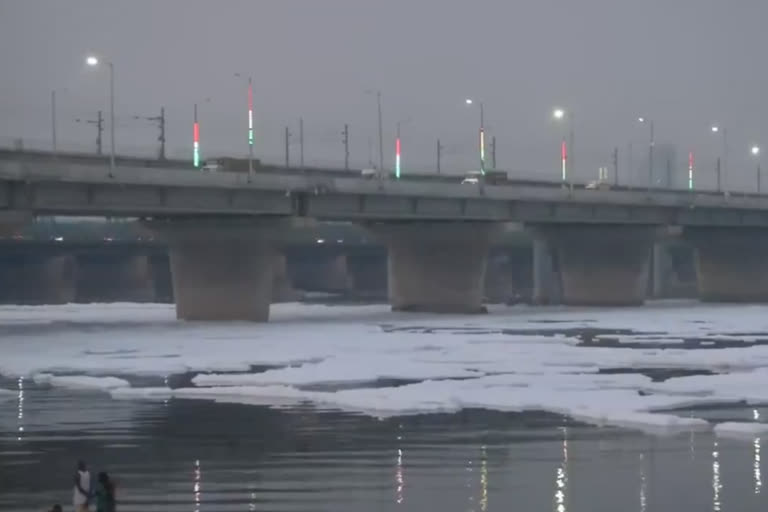New Delhi: A day after an increase in the ammonia level in drinking water being supplied to south, east and north-east Delhi, the DJB's Vice Chairman Raghav Chadha shared the information during the inspection of the Sonia Vihar water treatment plant, one of the two plants where water production had decreased due to an overnight increase in the levels of ammonia.
Chadha inspected the plant after the late Friday evening water crisis in the three districts because the production capacity at Sonia Vihar and Bhagirathi water treatment plants came down to 50 per cent due to the increased ammonia level in the water being discharged from Haryana.
He also held meetings with the concerned engineers, Chief Engineer and Member (Water), to ensure that water production increases to 100 per cent at both the water treatment plants.
Both the plants have a collective capacity of 250 MGD. Water from these plants reaches areas in south Delhi, East Delhi and north-east Delhi and parts of the NDMC area.
The Vice-Chairman issued a statement detailing the reasons for the ammonia increase, saying "Delhi is a landlocked city and gets water from the neighbouring states. Due to annual maintenance, water coming from Uttar Pradesh, that is from Ganga has stopped. This happens every October".
"Unfortunately, this maintenance work has coincided with the incidence of water that is released from Haryana into River Yamuna -- the water which comes into Delhi. Now, due to the discharge of that water from Haryana, the level of ammonia increased."
Chadha explained the level of ammonia in the water, which is somewhere between 1.7 PPM to 1.9 PPM (Parts Per Million).
"Yesterday (Friday), this had gone up to almost 3.5 PPM, which is perceived as an extremely high level of toxicity and is not fit for human consumption. As a result, the two significant water treatment plants at Sonia Vihar and Bhagirathi, which treat the water that comes in from River Yamuna, had to be shut."In order to treat this increase in ammonia, the Aam Aadmi Party (AAP) leader said the Delhi Jal Board had to close down these two plants.
"There's a concentration pond near DJB's Sangam Pump House, where water is getting stagnated. The flood barrage gates near the pump house open only during floods. However, because there were no floods this time, the barrage gates did not open, which has led to silting. Moreover, if we open the barrage gates, the entire water of the concentration pond will flow, which will, in turn, lead to a decrease in the water quantity in other plants," Chadha said.
Delhi Jal Board is using pumps and other machinery at different locations to pump the water from one place to another in the Yamuna, the leader said, adding that this will remove the stagnated water with increased ammonia, which will be replaced with the water that will come from Haryana through the Yamuna and from Uttar Pradesh through its emergent alternate route up to the affected plants.
Due to the shutting down of the two plants Gokulpuri, Sonia Vihar, Karawal Nagar, Babarpur, Tahirpur, Dilshad Garden, Nandnagari, Shahdara, Laxmi Nagar, Geeta Colony, Mayur Vihar, Kondli, Vivek Vihar, Seelampur, Shastri Park, Bhrampuri, Gandhi Nagar, Sarai Kale Khan, Okhla, Badarpur, Sarita Vihar, Vasant Kunj, Mehrauli, Greater Kailash, South Extn, Lajpat Nagar, Lodhi Road, Kaka Nagar and adjoining areas got affected.
(IANS)
ALSO READ: Traumatised victim recalls horrific 1984 Delhi riots



